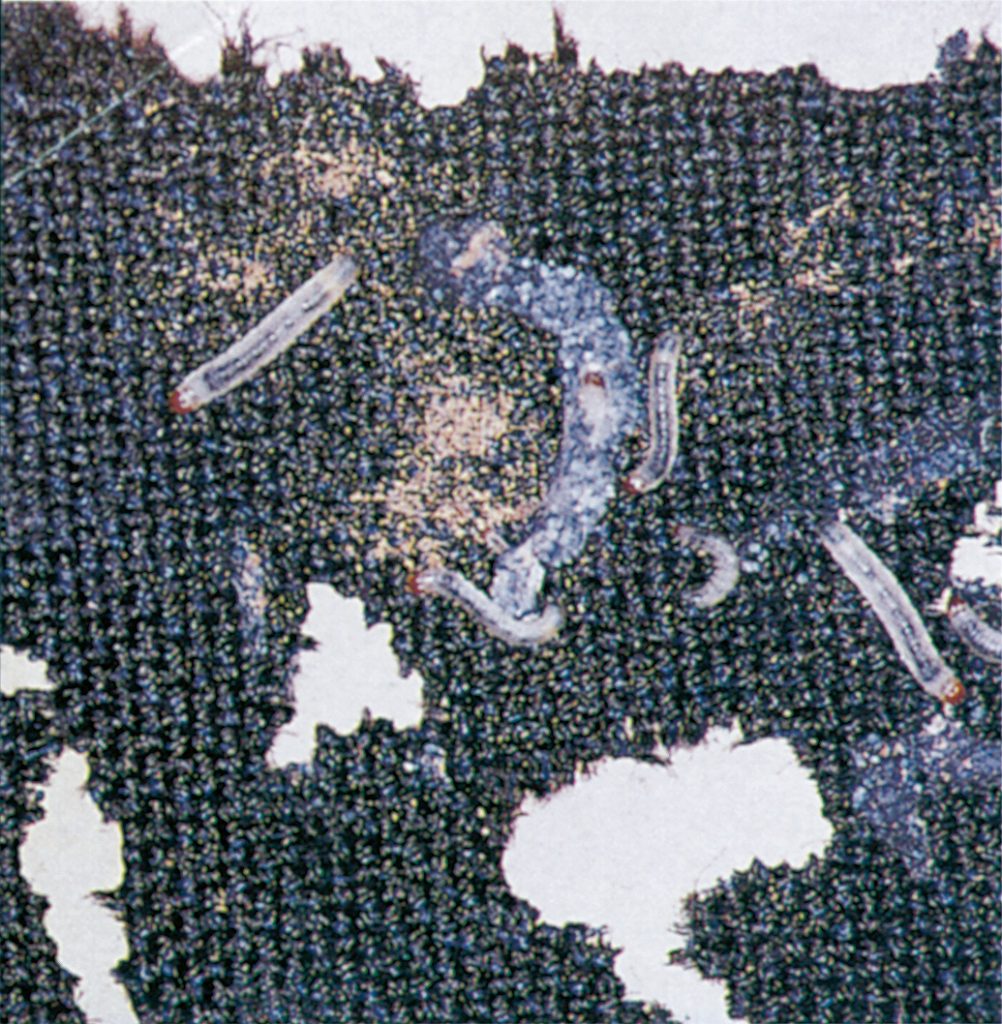Latin: Tineola bisselliella

This small moth, now common in human habitations in temperate countries, came originally from warmer parts of the world. It was probably not very abundant until houses started to be warmed more or less efficiently. It does not, therefore, live outside in temperate regions, and it is not one of the insects that fly in through an open window.
A female clothes moth lays about 100 eggs, which are difficult to see as they are very small and whitish, and they are usually deposited in the folds of clothing or in among the hairs of carpets and furs. After a few days the eggs hatch and each larva immediately starts to spin a fine tube around itself as a protection against desiccation. The tube becomes covered with gnawed scraps of the material that the larva is living in, together with faeces.

It is worth noting that the faeces which are the same colour as the food and more or less spherical are often mistaken for the moth’s eggs.
The development from the egg to the adult moth may take anything from one month to over a year, depending upon the temperature, the humidity and the quality of the food. The optimum temperature is around 25° C. In a centrally heated house one can therefore reckon on 4 generations in the year. The larvae require a supplement of food other than keratin. They search for spots and stains on the material and will also feed on flour, meat and dead insects.
Clothes moths have been decreasing in number since the 1950’s. This is due to several factors, including the use of effective impregnating materials, an increase in the use of synthetic materials which are not eaten by the moths; vacuum cleaners and the drier climate in our houses also help to keep the moths down.




